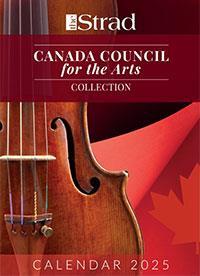Cellist Emily Mantone shares her personal preferences of the works, ahead of her recording release of the complete set on 8 November

Discover more Featured Stories like this in The Strad Playing Hub
Ludwig van Beethoven’s five Sonatas for Piano and Cello are some of the most cherished works in the entire cello repertoire. Remarkably, unlike the ten Violin Sonatas, the Cello Sonatas span the three traditionally delineated periods of Beethoven’s compositional career (early, middle and late), thereby representing, in a single body of work, almost the totality of his musical lifetime.
These pieces, along with the three sets of Variations, are well-loved among cellists, especially considering the fact that Beethoven never composed a proper concerto for solo cello. The compositional language that Beethoven employs when writing for the cello is particularly unique; the lyrical soliloquies much more closely resemble operatic recitatives than arias, and he certainly seemed to appreciate the cello’s ability to carve out a rhythmic motif with an emphasis beyond the capability of the violin.
While each sonata is truly a gem in its own right, I, like any other musician, have my own set of personal biases and preferences. This is a ranked list of Beethoven’s five Sonatas for Piano and Cello, but is not a ranking that is set in stone by any means. Rather, it is a snapshot of this moment in time in my own musical journey, and is one that I am sure will change many times over throughout my lifetime.
This is not a ranking that is set in stone by any means. Rather, it is a snapshot of this moment in time in my own musical journey
Sonatas for Piano and Cello, Op. 5 Nos. 1 and 2
Beginning with the bottom of the list, we have the first set of cello sonatas that Beethoven ever composed, the Op. 5 sonatas in F Major and G Minor, respectively.
Published in 1797 and composed when Beethoven was just 26 years old, these two pieces could be considered the prototype for what the modern cello sonata would later become. Prior to the composition of these two sonatas, the cello typically played either the role of accompaniment noted in ’basso continuo’ shorthand, or simply doubled the bass notes in a piece dominated by a keyboard instrument, playing the ’obbligato’ line. The Op. 5 Sonatas were the first pieces for this instrumentation with a through-composed cello part, meaning a cello part that was entirely independent from that of the piano.
While these sonatas provided the cello with its own distinct voice for the first time rather than just a reinforcement of the keyboard bass, they are still primarily ’piano sonatas.’ Though they include intricate and virtuosic keyboard writing, the cello writing leaves something to be desired.
Op. 102 Nos. 1 and 2
In the year 1815, Beethoven composed his last two Cello Sonatas, published as Op. 102 Nos. 1 and 2 in C Major and D Major. These two pieces, also published as a set mirroring the Op. 5 Sonatas, mark the beginning of Beethoven’s late-period style. Much like other iconic late-period works, such as the Ninth Symphony, the last four piano sonatas, and the late string quartets, the Sonatas Op. 102 exhibit a new level of probing emotional depth, expansion of form, and experimental complexity.
The first of the set, Op. 102 No. 1 in C Major, opens with a rhapsodic slow introduction, harkening back to the Adagio introductions of the Op. 5 Sonatas. However, once Beethoven launches into the fiery Allegro vivace in the relative minor key, the melodic content of the movement seems to recede in importance. Beethoven offhandedly executes a new compositional innovation in the second movement, when the first movement’s main theme makes its return amid the darkness of the second slow introduction of the piece, a practice that had not been done prior to 1815.
The second of the pair, the Op. 102 No. 2 in D Major, leans even more into the aforementioned elements of Beethoven’s late-period style. The first movement is in traditional Sonata-Allegro form, this time omitting any introduction and instead focusing on minimalistic thematic material based on simple scales and intervals. The first movement exhibits a rich, heroic attitude, while the second movement (the only true slow movement in any of the five sonatas) highlights the duality of dark and light, reaching depths of profound emotion that the previous four sonatas have lacked.
The piece concludes with a brief but complex fugue that is a marvel in its own right, but also foreshadows the language to come a decade later in the larger, much more complicated Grosse Fugue (Op. 133).
Op. 69
Last on this list we come to my personal favourite of the five sonatas, the Op. 69 in A Major. In this singular middle-period sonata, we hear true equality and partnership between the cello and piano for the first time. Melodic material throughout the sonata is shared equally between the two instruments, often with the cello presenting it first. The Op. 69 Sonata was completed in 1808, around the same time as the beloved Violin Concerto and the Fifth Symphony.
Dark and striking, albeit in A major, the folk-like melody presented at the start directly inspires the kindred, modified and fragmented versions of itself found across all three movements.
Beethoven grants the cello not only equality, but independence. Naturally, the cello and piano pass melodic material back and forth and provide each other with accompaniment when needed. But the piece’s most magical moments occur when the two go in separate directions, only to inevitably be pulled back toward one another again through perfect compositional logic.

Unlike many preceding works intended to be played only a handful of times, Beethoven’s music demands a lifetime of exploration. The manuscripts, the Op. 69 sonata a prime example, were canvases for ideas – ideas transformed and reinvented until perfection was reached. Beethoven was not one to let his innovations fall into obscurity. Rather, his radical and brilliant creative breakthroughs continue to be as stimulating now as they were for their very first performers and audiences.
Beethoven: The Complete Cello Sonatas by cellist Emily Mantone and pianist Umi Garrett will be released on Navona Records on 8 November 2024. Find out more here.
Read: ‘A deeply moving experience’: Alisa Weilerstein discusses Beethoven’s Cello Sonatas
Read: ‘Exquisite melodies and a profound story’: Christian-Pierre La Marca on his new album, Love Letters
Discover more Featured Stories like this in The Strad Playing Hub
The number one source for playing and teaching books, guides, CDs, calendars and back issues of the magazine.
In The Best of Technique you’ll discover the top playing tips of the world’s leading string players and teachers. It’s packed full of exercises for students, plus examples from the standard repertoire to show you how to integrate the technique into your playing.
The Strad’s Masterclass series brings together the finest string players with some of the greatest string works ever written. Always one of our most popular sections, Masterclass has been an invaluable aid to aspiring soloists, chamber musicians and string teachers since the 1990s.
The Canada Council of the Arts’ Musical Instrument Bank is 40 years old in 2025. This year’s calendar celebrates some its treasures, including four instruments by Antonio Stradivari and priceless works by Montagnana, Gagliano, Pressenda and David Tecchler.













































No comments yet